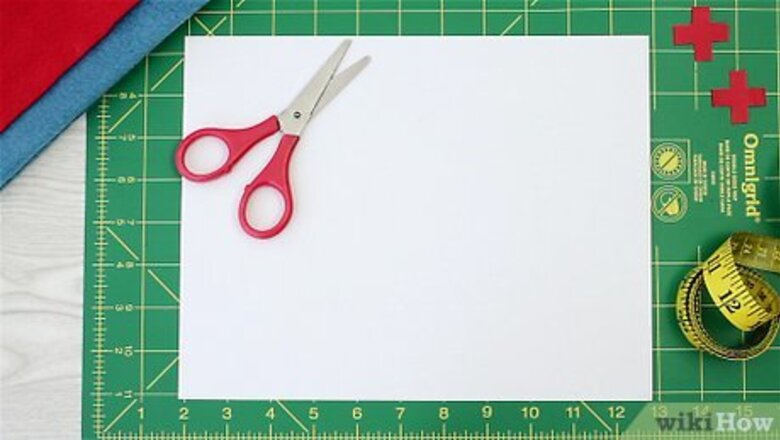
views
Making a Paper or Fabric Cap
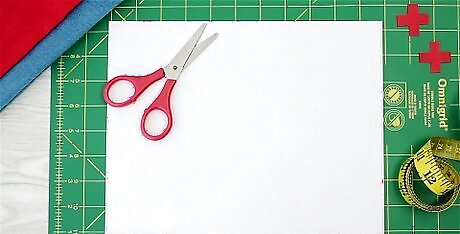
Use an 8 1/2 by 11-inch (22 by 28-cm) sheet of white paper for a simple cap. Plain printer paper will work just fine, as long as it is about 8 ⁄2 by 11 inches (22 by 28 cm). If you want a more durable nurse cap, use white cardstock. You can also cut an 8 1/2 by 11-inch (22 by 28-cm) rectangle out of white poster paper, and use that instead. If you can't find 8 1/2 by 11-inch (22 by 28-cm) paper, use A4 sized paper. The measurements are not exact, but they are similar.
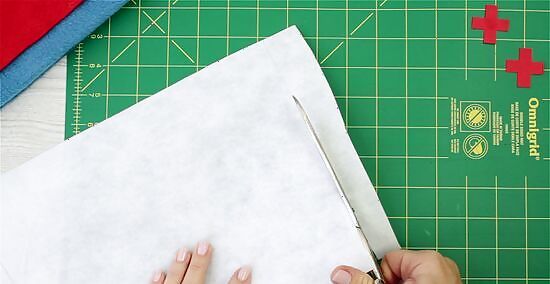
Use an 8 1/2 by 11-inch (22 by 28-cm) sheet of fabric for a traditional cap. Cut an 8 1/2 by 11-inch (22 by 28-cm) rectangle out of white cotton fabric. Use a ruler to lightly draw straight lines and then cut following them. Mist the fabric with enough fabric starch to make it damp, then press it on both sides with a hot iron. Use paper or fabric, not both. Use the cotton setting on your iron. This is usually the hottest setting.
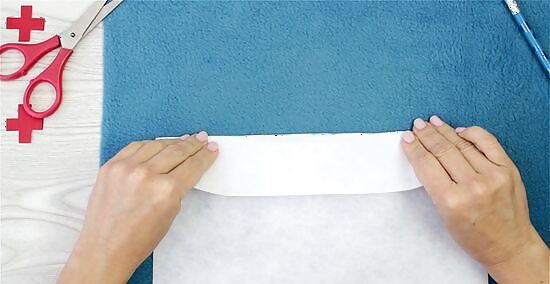
Fold the top 11-inch (28-cm) edge down by about 2 inches (5.1 cm). Orient the paper or fabric landscape style with 1 of the 11-inch (28-cm) edges facing you. Take the top 11-inch (28-cm) edge, and fold it down by about 2 inches (5.1 cm). This will create the band. If you used paper, run your fingernail across the crease to make it nice and sharp. If you used fabric, press the folded edge with a hot iron.
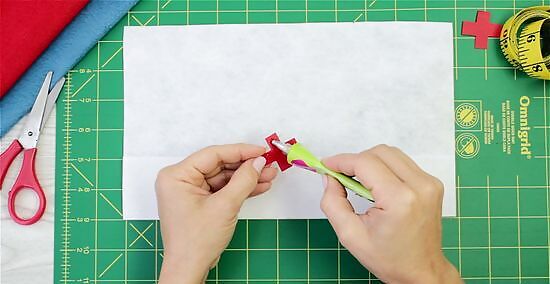
Glue a red, paper cross in the center of the band. Draw a 1 to 1 1/2-inch (2.5 to 3.8-cm) cross on of sheet of red paper, felt, or fabric. Cut it out with scissors, then glue it to the center of the band. Use a glue stick for paper and tacky glue for felt or fabric. If you don't want to cut and glue the cross, draw it on with a red marker. If you are making a fabric nurse cap, consider making an applique instead for a nicer touch.
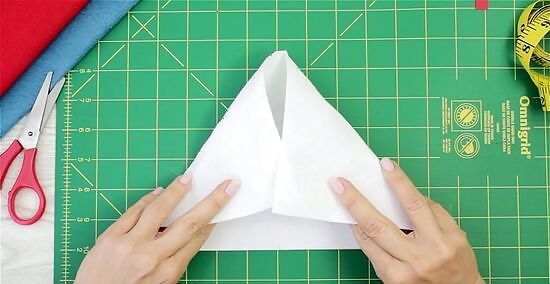
Flip the paper over, then bring the corners together to create a cone shape. Flip the paper over so that band is in the back and along the bottom edge of the paper. Bring the top-left and top-right corners toward the middle of the page and overlap them by about 1 to 2 inches (2.5 to 5.1 cm). Move the corners together at the same time to create a cone shape. Don't fold them down.

Use a strip of double-sided tape to hold the corners together. Lift the top corner and place a strip of double-sided tape on the bottom corner. Press the top corner back into place. You can also use glue, but you will need to secure the corners with a clothespin or paper clip until the glue dries. You can also just staple the corners together or place a piece of clear tape over the seam. This is the back of the nurse cap. The front of the cap is the side with the band and the cross. If you are using fabric, use double-sided fabric tape or iron-on hem tape.
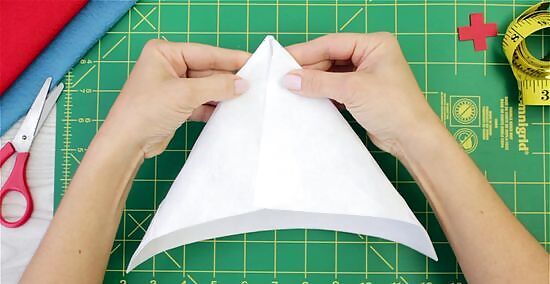
Fold the pointed tip of the cap down and secure it with tape. When you look at the back of the cap, you will see a triangle created by the taped-down corners. Take this point and fold it toward the bottom of the triangle. Secure it with another strip of double-sided tape, regular tape, or glue. You don't have to do this, but it will make the nurse cap more realistic. If you used fabric tape or hem tape earlier, you should use it now.
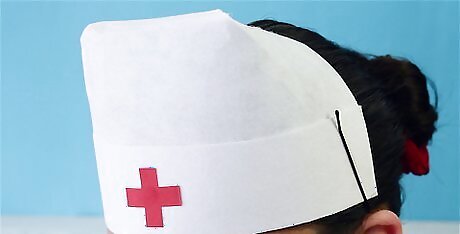
Pull your hair up into a bun, then secure the nurse cap with bobby pins. Pull your hair up into a neat bun at the back of your crown, just before your head starts to curve down. Set the cap on top of your head, and position it just in front of the bun. Slide bobby pins up through your hair and onto the sides of the cap. Use at least 1 bobby pin on each side. You don't have to put your hair up, but it will look more professional. If you really want to keep your hair down, consider pulling it back into a half-up ponytail. This will give the cap something to clip to.
Using a Paper Plate

Fold a white paper plate in half to make a semi-circle. The best type of paper plate to use for this is the flat kind that has a ruffled rim. The exact size of the paper plate does not matter; you can use a large, medium, or small plate. The bigger the plate is, however, the bigger your cap will be. Run your fingernail across the folded edge to create a sharp crease.
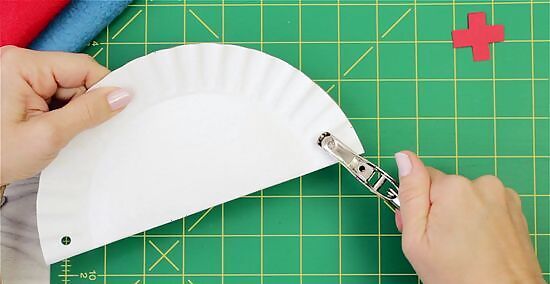
Poke a hole on each side of the semi-circle, close to the folded edge. Make the holes about ⁄2 inch (1.3 cm) inch from each bottom corner of the plate, where the curved edge meets the straight edge. You can do this with a pair of scissors or with a hole puncher. You will use these holes to attach the string.
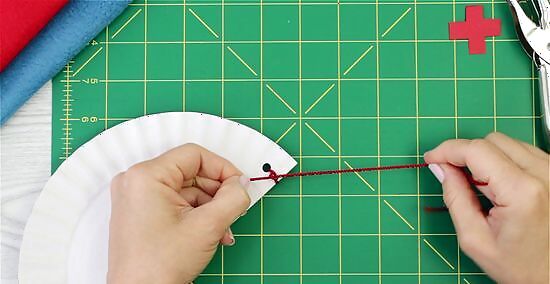
Tie a piece of string to each hole to create the ties. Cut 2 pieces of string that are about 24 inches (61 cm) long. Tie 1 string to each hole. Put the nurse cap against your forehead and tie the strings together in the back. Cut the strings if they are too long, then take the cap off. You can use any type of string you want: twine, yarn, or even ribbon! You can also use 1 piece of thin elastic that is half of your head circumference. Tie each end to each hole.
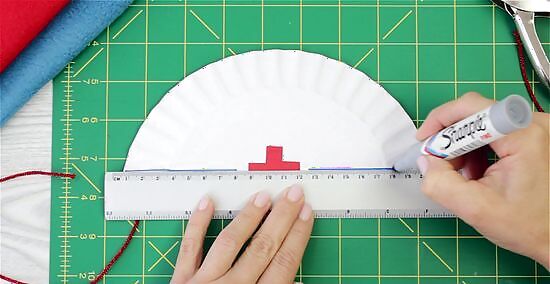
Draw a red cross and a blue horizontal line in the middle of the cap. Use a red marker to draw a 1 to 1 1/2-inch (2.5 to 3.8-cm) cross in the middle of your nurse cap. Next, use a blue marker to draw a line going across the middle of the cap, from the left side to the right. When you reach the red cross, skip over it; don't draw across it. For a fancier nurse cap, try the following instead: Cut a 1/8 to 1/4-inch (0.32 to 0.64-cm) strip out of blue felt, and glue it to the front of the cap. Cut a 1 to 1 1/2-inch (2.5 to 3.8-cm) cross out of red felt, and glue it to the middle of the cap. Embellish the cap with sequins, rhinestones, or glitter glue.
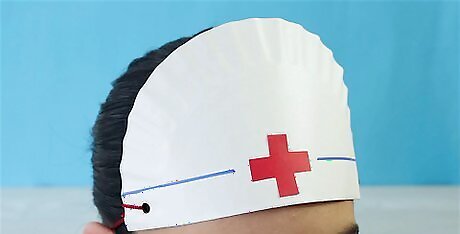
Let the nurse cap dry before wearing it. This is especially important if you used glue to decorate the cap. Once the cap is dry, hold it against your forehead, then wrap the strings around your head to the back. Tie them into a bow to keep them secure. If you used elastic, simply slide the elastic over your head and to the back. You don't need to put your hair up into a bun or ponytail, but you can if you want to. How long the hat takes to dry depends on the materials you used. Tacky glue may take 2 to 3 hours to dry, but glitter glue can take a whole day!




















Comments
0 comment